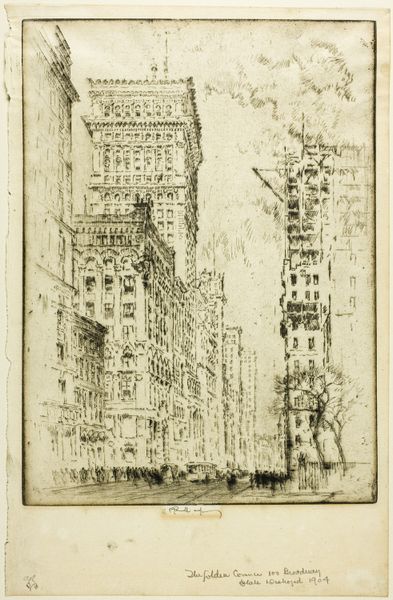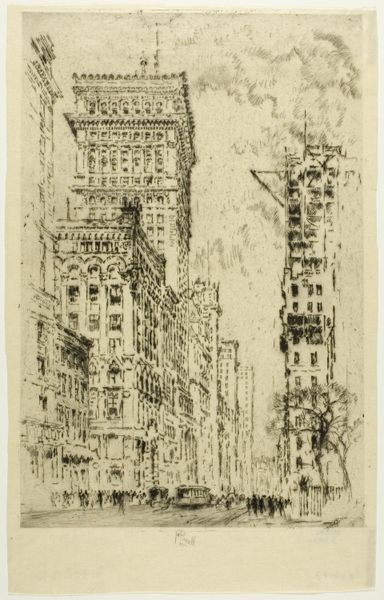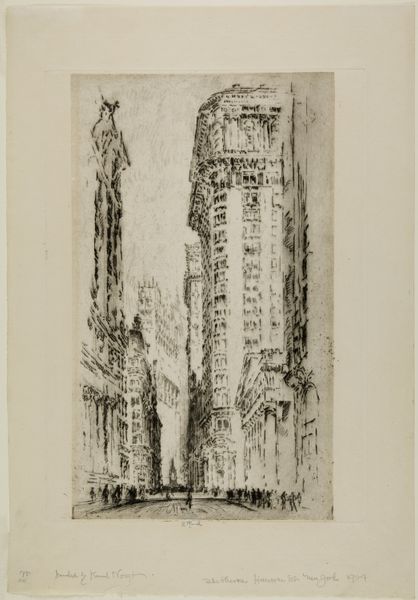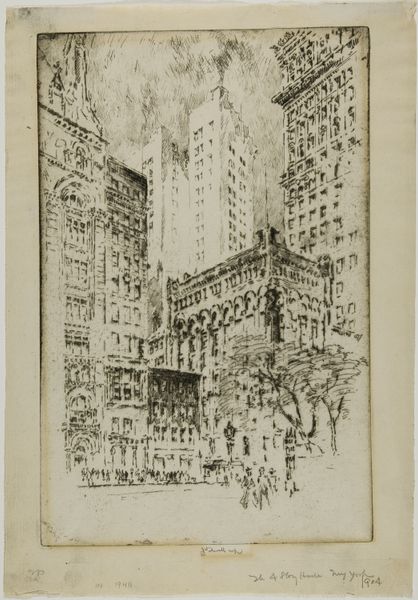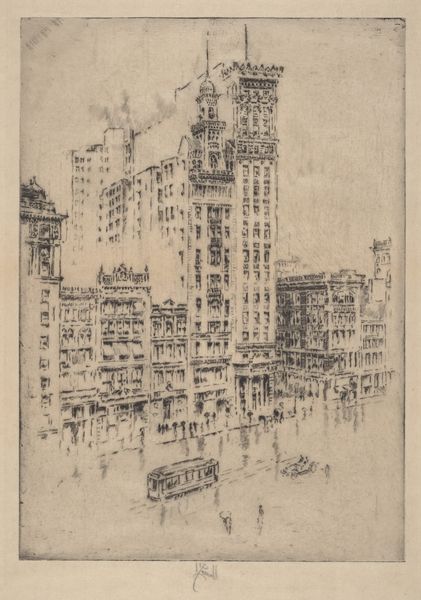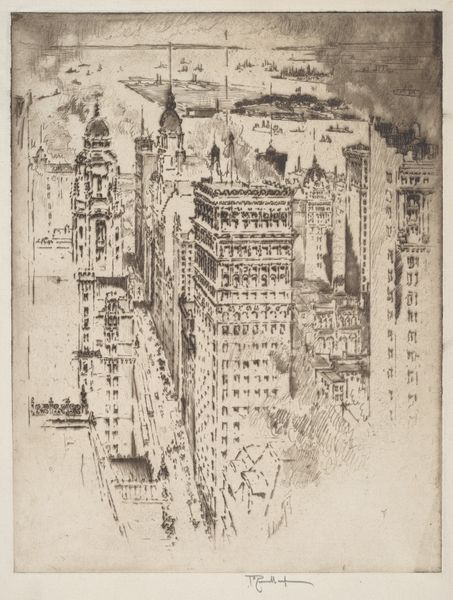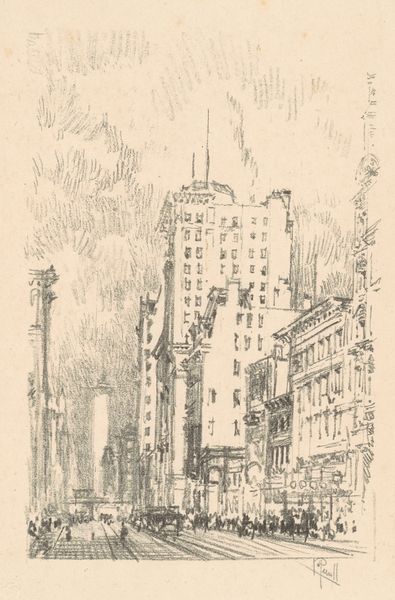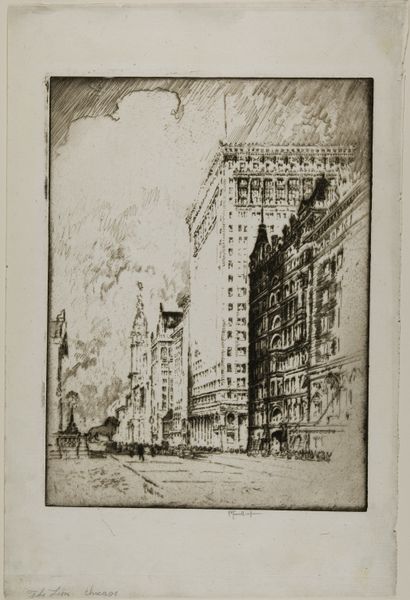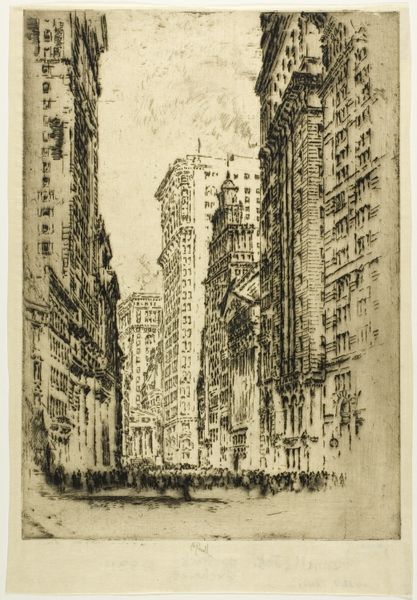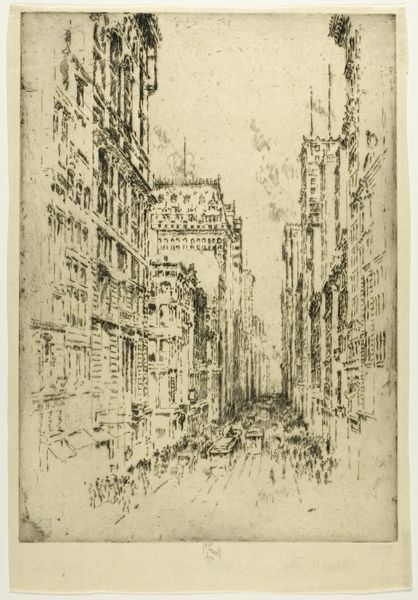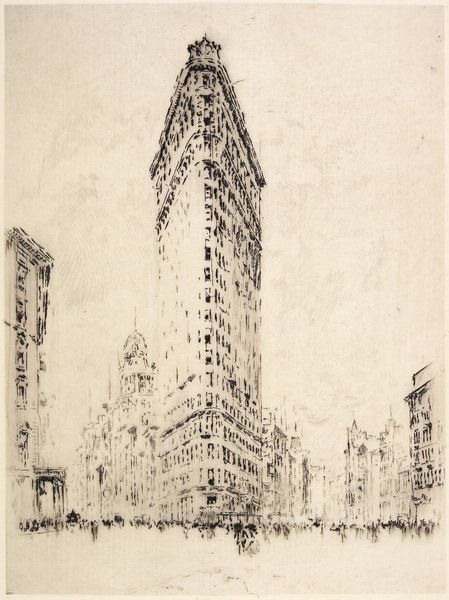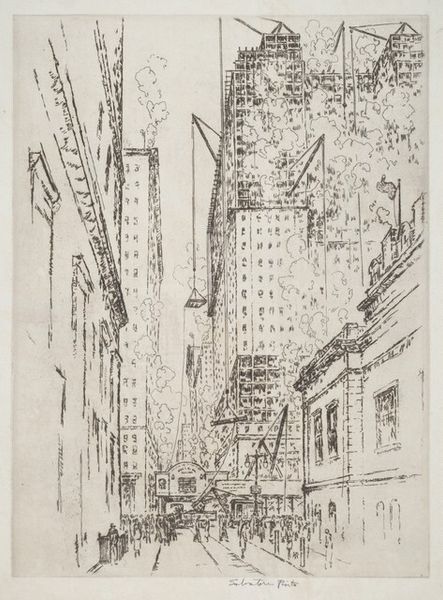
Dimensions: 301 × 176 mm (image); 396 × 255 mm (sheet)
Copyright: Public Domain
Curator: Before us is Joseph Pennell’s "Park Row," an etching on paper created in 1904, part of the Art Institute of Chicago's collection. Editor: My first thought is how hauntingly fragile this image feels. The thin lines barely contain the immense scale of the architecture, lending the whole scene a fleeting, dreamlike quality. Curator: That fragility, I think, comes from the etching technique itself. Notice how Pennell uses incredibly fine, almost hesitant lines to define the buildings. This gives a real sense of light and air, but also a structural instability. Editor: But isn’t that the point? Turn-of-the-century New York was defined by both breathtaking ambition and anxieties about modernity. The architectural imagery speaks of this hubris, this need to express domination and create lasting monuments in a quickly transforming metropolis. Curator: Yes, there’s that symbolic weight but there’s also the raw technique; the visible, erratic stroke-work gives us, as beholders, insight into the hand, pressure and decisions of Pennell’s process. We witness how light can be rendered in a print with structural components. Editor: Look at how the crowds are depicted: mere scratches in the foreground! But somehow they become everyman, anonymized citizens against this grand display of finance and power… I find it to be emotionally powerful. Curator: Agreed, there’s the sense of scale and depth, all rendered by these incredibly fine lines and dark tonality – and despite the implied presence of a massive city block bustling with life and industrial energy. We’re not experiencing “New York, the city”, so much as “the concept of the City as Progress”. Editor: Seeing it from both sides now–a symbol laden city block captured by the structural process, but rendered transient in visual memory by the same medium, it is quite captivating. Curator: Exactly. The materials work, or should I say "don't work" in this image, they defy what an etching should be in that moment. This artwork represents the future while dissolving under the weight of progress in our view.
Comments
No comments
Be the first to comment and join the conversation on the ultimate creative platform.
